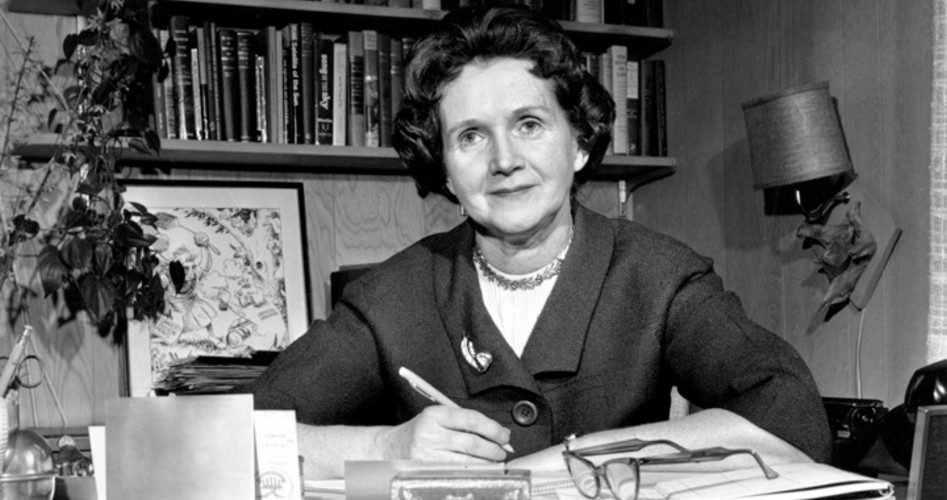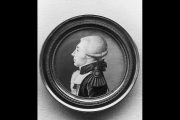
Fifty years ago, on September 27, 1962, Rachel Carson published her book Silent Spring. The book is like a bible to many environmentalists, and it is largely responsible for the ban on DDT that was first imposed by our own Environmental Protection Agency and then by the UN and the World Health Organization. The book is still reverently taught in high schools and colleges. Thirty years ago, in 1982, our Postal Service honored Rachel Carson with her own commemorative postage stamp.
The real story behind Rachel Carson and Silent Spring, however, is anything but good. She had only modest background in science, but worse, she played with data in order to reach her predetermined goal. As one example, Carson cited the work of Dr. James DeWitt thus:
Dr. DeWitt’s now classic experiments [show] that exposure to DDT, even when doing no discernible harm to the birds, may seriously affect reproduction. Quail into whose diet DDT was introduced throughout the breeding season survived and even produced normal numbers of fertile eggs. But few of the eggs hatched.
In fact, Dr. DeWitt’s studies showed this proposition was not true, as James Delingpole noted in May 2009. The DeWitt study showed that there was no difference in egg hatching between those birds that had been fed DDT and those that had not. In fact, the studies showed that birds exposed to DDT hatched 50 percent more eggs than the control group of non-DDT-fed birds.
In 1972, after seven months of hearings and 9,000 pages of testimony, an administrative law judge with the Environmental Protection Agency found
DDT is not a carcinogenic hazard to man…. The use of DDT under the regulations involved here do not have a deleterious effect on freshwater fish, estuarine organisms, wild birds or other wildlife.
The World Health Organization in 2006 partially rescinded its earlier ban, with Arata Kochi of that organization stating:
We must take a position based on the science and the data. One of the best tools we have against malaria is indoor residual spraying. Of the dozen or so insecticides WHO has approved for house spraying, the most effective is DDT.
DDT was one of the most important tools in promoting health and saving lives in human history. In the First World War, for example, diseases like malaria, dengue, encephalitis, and typhus killed more soldiers than bullets did. Today malaria, the greatest killer of all, takes a human life every 30 seconds, according to Gerald and Natalie Sirkin in American Spectator. The National Academy of Sciences in the 1960s was very direct about the value of DDT:
To only a few chemicals does man owe as great a debt as to DDT. In little more than two decades, DDT has prevented 500 million human deaths, due to malaria, that otherwise would have been inevitable.
The miracle compound, DDT, dramatically reduced deaths around the world and also helped control insects that reduced food production. So Carson had to be very creative in making her argument against DDT. She dedicated Silent Spring to Dr. Albert Schweitzer, the famous physician in Africa who dedicated his life to healing the natives there. But in Schweitzer’s own autobiography, the doctor states:
How much labor and waste of time these wicked insects cause, but a ray of hope, in the use of DDT, is now held out to us.
Carson alleged that DDT causes cancer, yet when the United States Public Health Service did a study in which human volunteers ingested three times the normal amount of DDT for 18 months, the scientist Wayland Hayes found virtually no adverse effects at all when the test groups were reviewed six years and then 10 years later.
Montrose Chemical Company, which made DDT, found no instance of cancer in workers wearing protective clothing — and that included workers who had been at the plant as long as 19 years.
In fact, Dr. J. Gordon Edwards in an article, “DDT: A Case Study in Scientific Fraud,” in the Fall 2004 issue of the Journal of Physicians and Surgeons, noted that DDT’s ban was built on faulty research. Earlier, in 1992, Dr. Edwards noted:
DDT in the diet has repeatedly been shown to enhance the production of hepatic enzymes in mammals and birds. Those enzymes inhibit tumors and cancers in humans as well as wildlife.
The cost to millions of innocents in the Third World was profound. Consider the island nation of Sri Lanka. Prior to using DDT, there were a staggering 2.8 million malaria cases in Sri Lanka. With the wonder chemical DDT, the number of malaria cases dropped to 17. After the international organizations’ ban on DDT, the number of malaria cases in Sri Lanka shot back up to 2.5 million. To put this in perspective, the long and very bloody Sri Lanka Civil War that lasted from 1983 to 2009 between the Tamil and Sinhalese claimed an estimated 80,000 and 100,000 lives.
Silent Spring is an obituary to tens of millions of the poorest and most helpless of humans, those born into villages in Africa, Asia, and Latin America who had to live with mosquitoes and other deadly insect pests that carried disease, disability, and death.
The ban on DDT also affected American farmers, particularly those who grew crops like cotton and potatoes, who fought pests successfully with DDT, as well as farmers in Third World nations (although they could not afford the expense as much as American farmers). The ban has consequently made food costlier and less available in the global market, which again particularly affects the villager in Zaire or Sri Lanka.
Rachel Carson’s book is an example of politically motivated “science” destroying lives. True science cannot be prejudiced, it cannot be ideological, and it can serve no cause but truth.
Photo of Rachel Carson: AP Images



